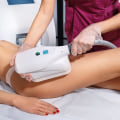Every year, more than 150,000 men and women undergo fat reduction treatments without surgery. Non-surgical fat reduction is a less invasive alternative to regular liposuction, but does it work? The answer is more complex than a simple yes or no. Depending on your goal, three body contouring procedures (liposuction, tummy tuck, and cold sculpting) can help you achieve the look you want.
All three can offer quick and lasting results if you're willing to maintain a healthy diet and stay active. In recent years, several modalities have been made available for the non-invasive reduction of adipose tissue, such as cryolipolysis, radiofrequency, low-intensity laser and high-intensity focused ultrasound. Each technology employs a different mechanism of action to cause apoptosis or necrosis of target adipocytes. Among these technologies, cryolipolysis has not only been available on the market for a long time, but it has also been better researched, including in vitro and animal models and randomized controlled clinical trials in humans. The principle behind cryolipolysis is based on the premise that adipocytes are more susceptible to cooling than other skin cells.
The precise application of cold temperatures triggers adipocyte apoptosis, which causes an inflammatory response and causes slow digestion by surrounding macrophages. In clinical studies, cryolipolysis has been shown to reduce subcutaneous fat at the treatment site by up to 25% after treatment. Improvements were observed in 86% of the subjects treated. At 73%, the patient satisfaction rate is higher than with other technologies used for non-invasive lipolysis. Cryolipolysis has been shown to be a very safe method of contouring the body and is achieved with a minimum of discomfort.
The expected side effects are temporary erythema, bruising, and transient numbness, which usually resolve within 14 days after treatment. With a prevalence of 0.1%, the most common complaint is late-onset pain, which occurs 2 weeks after the procedure, which resolves without intervention. Although no procedure has yet been accepted as the reference standard for non-invasive body contouring, cryolipolysis is considered safe and efficient, with a high rate of patient satisfaction. The most recent ultrasound-assisted procedures have allowed plastic surgeons to be highly precise in reducing fat with a minimum of post-surgical complications. Developed by a team of researchers from Harvard University, CoolSculpting removes fat from the body through a process called cryolipolysis, or reducing the temperature of fat cells. The best way to choose between liposuction, CoolSculpting, TruSculpt, BodyTite, and other non-invasive forms of fat reduction is to seek advice from a board-certified cosmetic surgeon. After fat removal, the surgeon will evenly distribute the remaining fat cells in the area to achieve a smooth, natural look.
Since invasive procedures carry greater risks, it is no accident that there is an increase in the availability of minimally invasive and non-surgical options for those seeking fat reduction treatments and other types of cosmetic surgery. This treatment uses a specialized cryolipolysis device to cool unwanted fat cells to the point of death without affecting surrounding tissues. TruSculpt by Cutera is a similar treatment that uses controlled radiofrequency technology to remove fat cells from the hips, thighs, buttocks and abdomen. Whether it comes in the form of a persistent stomach after pregnancy, areas of fat around the thighs that don't move, or bumps along the flanks and back, localized fat can be difficult to get rid of permanently. It provides more dramatic results than other non-invasive fat reduction procedures; however it has a longer recovery period (up to six weeks) and generally costs more than its non-surgical counterparts. Unlike CoolSculpting which freezes fat cells; SculpSure destroys fat cells through heat (a process known as apoptosis).
So yes; non-surgical fat reduction works for the right patient; but it doesn't compare to traditional liposuction. The treatment usually lasts about an hour and most patients require one or two treatments to see noticeable results. Suction is applied as the surgeon moves the cannula through the fat reservoir; removing excess fat cells and sculpting a slimmer body contour. Non-surgical fat reduction treatments offer an effective way for people who want to reduce localized areas of stubborn fat without undergoing surgery.
While these treatments are not as effective as traditional liposuction; they can provide excellent results when combined with diet and exercise. The combination of different types of surgical fat reduction treatments can provide better results than any single treatment alone. However; it's important to consult with your doctor before undergoing any type of procedure; as each person's body responds differently to different treatments.
Suggested reading:




